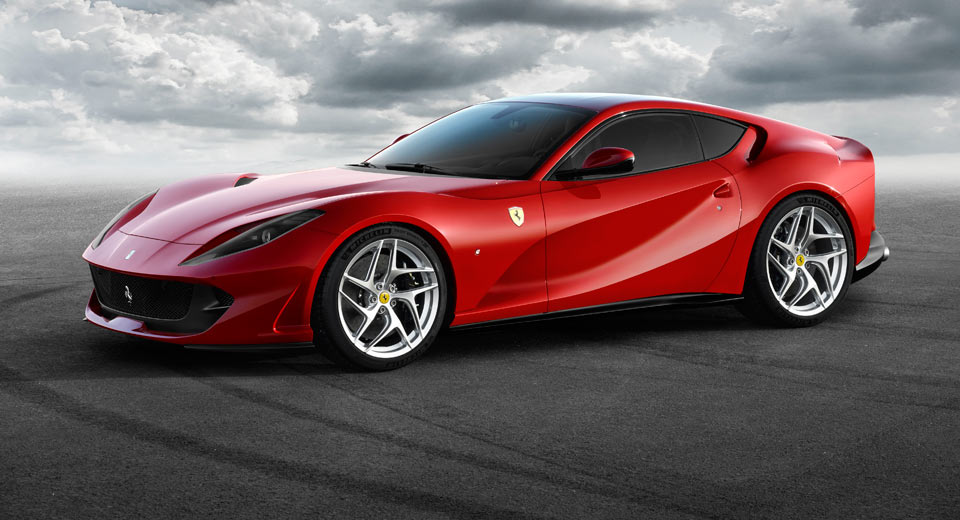
Ferrari has just taken the wraps of the successor to the F12, official dubbed the Ferrari 812 Superast. Set to debut to the world at the Geneva Motor Show next month, it is the most powerful series production model ever produced by the famed Italian manufacturer.
In creating the model, Ferrari has introduced a massive new 6.5-liter naturally-aspirated V12 engine, 200 cc larger than the unit found in the F12 and the LaFerrari. This screaming powertrain delivers 800 PS (789 hp) at a sky-high 8,500 rpm and 718 Nm of torque at 7,000 rpm. Mated to this engine is an improved seven-speed dual-clutch automatic box that has been designed to provide quicker shifts than ever before and to aid in impeccable throttle response.
All told, it’ll accelerate to 62 mph (100 km/h) in just 2.9 seconds and hit a 211 mph (340 km/h) top speed, figures identical to the slightly less powerful but much lighter F12tdf.
Another development for the 812 Superfast is that it uses electric power steering for the first time and works in conjunction with the same Slide Slip Control found across other Ferrari models. What’s more, the Virtual Short Wheelbase system that enables the rear wheels to aid in steering, has been updated from the F12tdf and is said to improve nimbleness and increase the model’s agility further.
From a styling perspective, the 812 Superfast is more of an evolution than the F12 than we expected. Although the general shape and size of the car is similar, all the body panels are entirely new and it adopts a significant more menacing design that makes even the hardcore F12tdf seem tame.
The front for example debuts a new headlight design for the Italian manufacturer. There’s also a massive front grille and a hood with a number of air vents. At the sides, the bold lines of the F12 have been accentuated even further and flow back to an entirely bespoke rear end that includes similar quad taillights to the GTC4 Lusso and an obvious lip spoiler.
Ferrari says that the new front end incorporates a number of active flaps to improve aerodynamic efficiency while there is a so-called “aerodynamic by-pass” at the rear to increase downforce.
The cabin remains quite similar to the F12 but has a slightly more radical look with new dashboard elements and a distinctive steering wheel.






